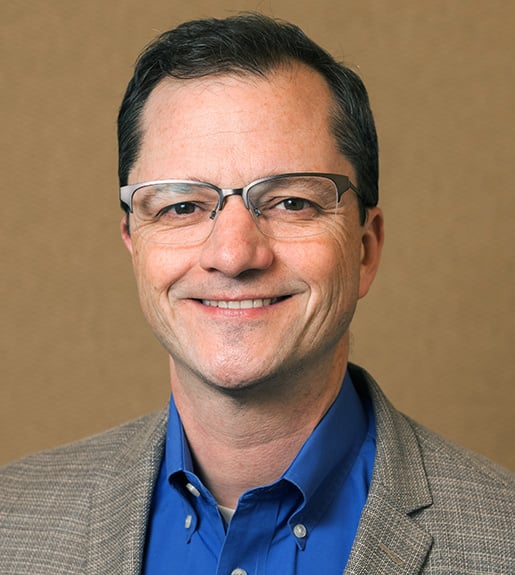Arts and Culture
Article
The Culturephiles
3da6b7e9-252d-4421-afd1-87a4f05c497d
6 min
https://edge.sitecorecloud.io/tessiturane75c3-tessituraneee12-development-6640/media/Images/Discover-Images/Andrew-Blog/Archive/Graceland/Graceland-mansion-768x465.jpg?h=465&iar=0&w=768
Graceland remained the same, but I had changed.
Finding Common Ground at Graceland
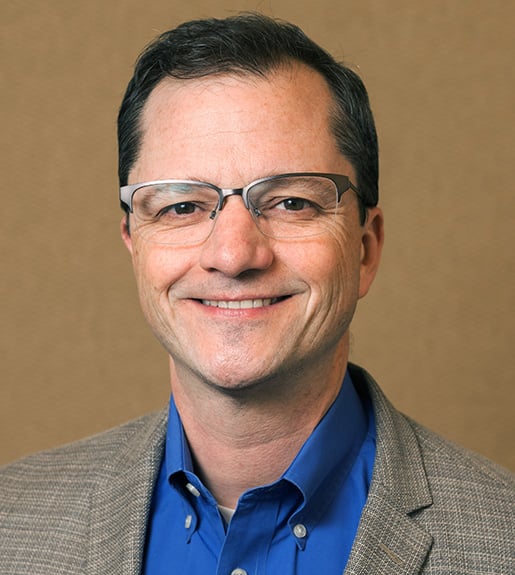
President & CEO, Tessitura
Finding Common Ground at Graceland
10/30/2018
6 min
The first time I went to Graceland, it was for all the wrong reasons.
It was my first year of graduate school and my buddies and I were spending the summer on campus at Indiana University. I can’t remember who had the idea to drive to Graceland. All I know is one Friday night, fueled by Skittles and Mountain Dew, we drove the eight hours overnight from Bloomington, Indiana to Memphis, Tennessee and were on the first Saturday morning tour.
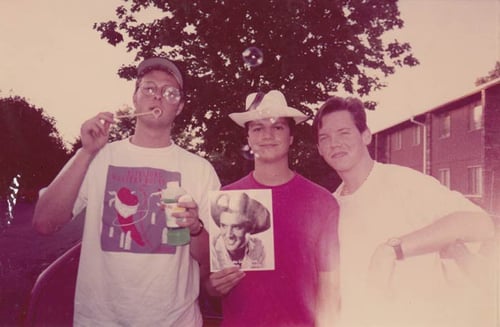
Circa 1994. Ah, to be young and smug.
It was 1993, and our slightly smug, academically-minded 22-year-old selves found Elvis to be a symbol of kitsch and tackiness more than music or culture — what with the rhinestones, the Vegas act, and the rest. He had been dead for less than two decades, and America was divided about his legacy. A New Yorker cartoon at the time neatly summed it up: it showed a mythical entrance to Graceland with two box offices — one marked “Ironic Tours” and the other “Non-Ironic Tours.”
We were going for the Ironic Tour.
Graceland was Elvis’s homestead, refuge, and informal recording studio for most of his years of fame. He updated the design over the years, but when he died there in 1977, the home and decor were preserved like a mosquito in amber — a snapshot of the 1970s in America. Corduroy, smoked glass, shag carpet, Nixon.
Within minutes of our tour starting, my friends and I realized abruptly that we had stumbled into a “non-ironic” tour. Elvis’s TV room was our first stop: banks of 1970s era TVs mounted all along the walls, mirrored ceiling. The entire room, from the walls to the floors to the furniture, was a riot of just two colors: yellow and blue. Everything was vinyl. Taking one look at it, my compadre said (a bit too loudly), “Man! Elvis had NO TASTE!” All eyes were on us. A few shook their heads. No one said anything and the tour guide herded us to the next room.
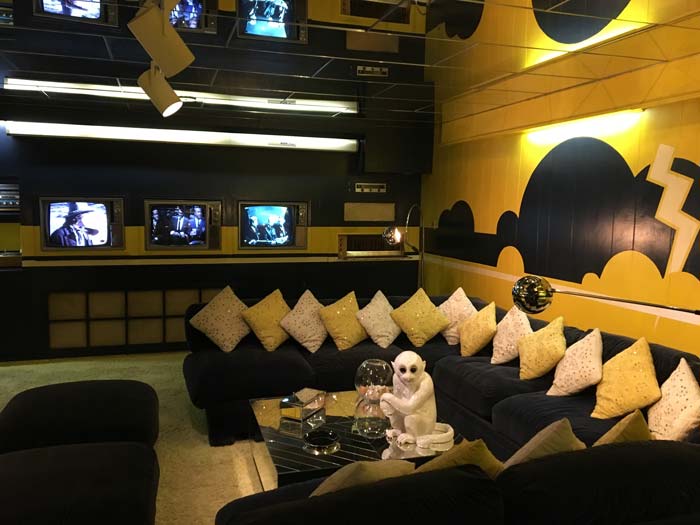
Properly admonished, we remained silent for the rest of the tour, and within 24 hours we had made the long drive back to Indiana. Aside from a photo or two, the trip quickly faded into the rear view mirror.
In the years after that first trip, something unexpected happened. My relationship with Elvis transformed. I finished school and moved to New York City. One night I heard myself at an apartment party belting out “Suspicious Minds” (“I’m caught in a trap...”) and realized that I was singing it non-ironically. It was a fun song to sing. It was a catchy tune and no one could deliver it like Elvis.
In the late 90s, I was at my first arts admin job, working in fundraising at Carnegie Hall. One day, Sting’s “Rock for the Rainforest” fundraising gala was in residence. As a young arts administrator, my only way to experience this hot ticket was to ignore the stern email warning to all staff not to sneak into the dress rehearsal. I slipped into the upper balcony unseen. Onstage were Sting, Paul Simon, Bruce Springsteen, Billy Joel, Elton John, James Taylor, and a few other names you might recognize.
Commanding all of their attention was Jessye Norman, the world-famous opera diva. She launched into the Neapolitan opera staple “O sole mio” and after a bit, Springsteen interrupted her. “Hey Jessye, that sounds real nice. But here’s how us rockers do it.” And the band launched into the Elvis hit “It’s Now or Never” — which until that moment I had never noticed was the same exact melody. Soon everyone was onstage belting out Elvis with Jessye Norman’s dramatic soprano soaring above them all. I was otherwise alone in the 2,800-seat auditorium, and this moment was nothing less than a religious experience. My Elvis conversion was complete.
Two decades passed and my love for Elvis never waned. Then one day in 2016, I learned that Graceland had chosen Tessitura as their new technology partner. I would be going back.
The second time I went to Graceland, it was as a true believer.
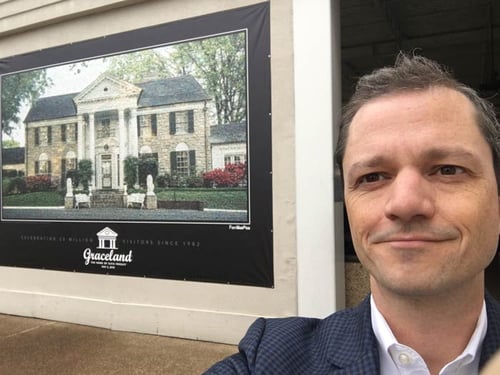
Returning to Graceland as a true believer.
It has been said that tragedy plus time equals comedy. There seems to be a similar aphorism for design: Tacky plus Time equals Treasured. Or more specifically, think about Elvis’s 1977 design ethos. The progression from 1977 to 2016 looks something like this: Trendy to Timely to Tacky to Retro to Vintage to Timeless. By 2016, Graceland was timeless.
Here’s a fun fact: Graceland is the second most visited historic house in America. The first is Mount Vernon, the home of George Washington. The homes of “The Man Who Rebelled from a King” and “The King.” Both are preserved moments in time. At Mount Vernon you see how an 18th-century working farm would have looked. At Graceland you see what 1977 felt like. For me, 1977 is around where my first childhood memories begin. That big bulky telephone in Elvis’s office could have been the one in my family’s living room. I think my grandmother had those swivel kitchen chairs with the vinyl orange and gold leaves. And on and on. It no longer felt tacky to me. Just like Mount Vernon, Graceland felt timeless.
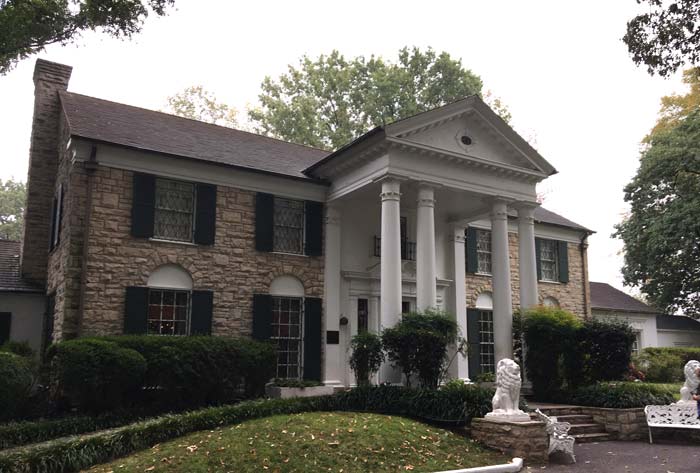
Which brings me to my revelation about Elvis and Graceland.
Once again, I was on the early tour. The little tour bus dropped us at the front door of the small mansion. Two middle-aged men strolled over and asked if I’d take their picture in front of the house. They took mine in return. They were a couple from Canada with a shared love of American music. This was the final stop of a music tour that had included Chicago, Austin, Nashville and other music cities. They had spent the prior night on Memphis’s blues corridor Beale Street, and now Graceland was the grand finale. Their non-ironic love of Elvis was palpable.
We were a group of about 20, including my new friends from Canada, a number of couples of various ages, and a few older gentlemen with highly recognizable red baseball caps. Now, one can never judge a book by its cover, but one can surmise that my Canadian friends were on a somewhat different ideological plane than the gentlemen in the hats. But here, for this hour or so, it didn’t matter. Ideology was set aside. We shared something deep and satisfying: a love of Elvis, his time, and his music.
And then the moment of truth, as the doors to the mansion swung open and we filed in to Elvis’s living room. Grand piano, family pictures on the walls, all of it.
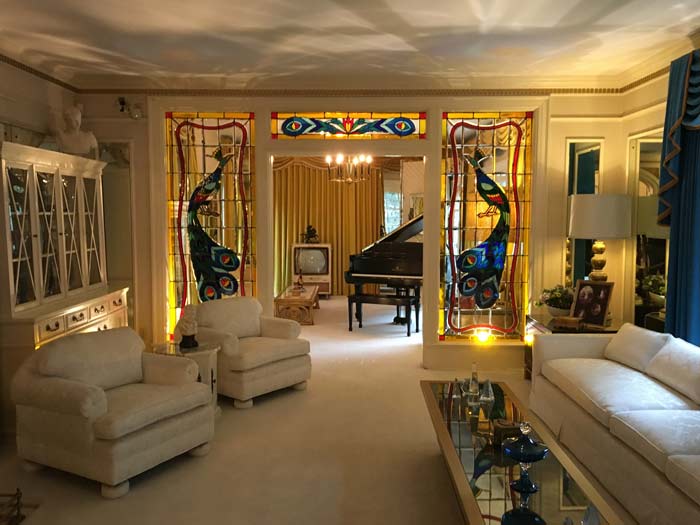
I’d like nothing more than to say that these men started talking and ended up trading phone numbers, but that didn’t happen. Once or twice they held a door for each other, and they all stood side-by-side as we all made solemn semi-circle around The King’s final resting place. And honestly, that was enough.
I think that if the folks from Canada and the gentlemen in the hats had started up a conversation, it wouldn’t have been about ideology — it would have been about music. Something we can share rather than guard. In a world that finds itself so divided, it seems to me what we need more than anything is finding places of common ground.
I am not suggesting that Elvis is a pure example of common ground, but then who is? His legacy continues to be complicated, as most recently explored in the documentary “The King.” Yet, on that day, in that moment, on the steps of Graceland, I saw a glimmer of something that made me sit up and take notice.
Watching the tour group happily file back onto the bus, I had a clarifying thought. Imagine this scenario: you are at an event — a family dinner, a work outing, a community gathering — and you end up in conversation with someone who holds a very different view of the world than you. How do you navigate it? How do you start to understand each other? How can you, personally, help bridge the divide?
Understanding one another is the first step towards each other again. And what is a simpler first step towards shared understanding than shared culture? Laughing at a musical. Clapping along together at a concert.
Here’s a question you might use to break the ice: “Do you have a favorite Elvis song?”
Which in turn might lead any number of places of commonality — memories, movies, families, kids, who knows. All I know is you have probably found some common ground, a pinpoint of shared culture, which is the first step to understanding. Culture is good at that.
As Paul Simon sings,
But I’ve reason to believe
We all will be received
in Graceland.
* * *
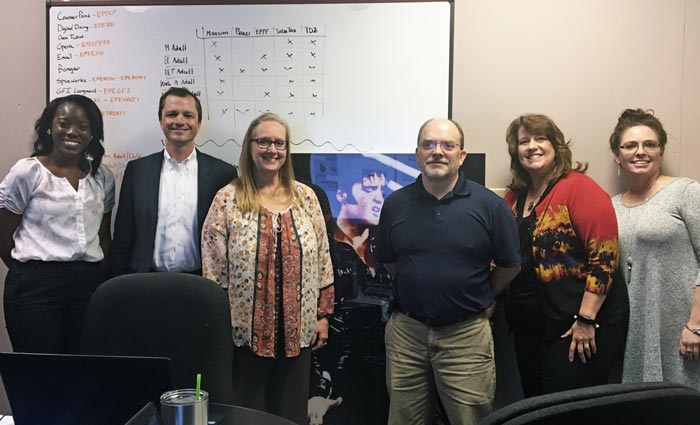
Here I am with the great Tessitura team at Graceland. And yes, The King is photobombing us — just as he should be.
Topics
Arts & Culture
